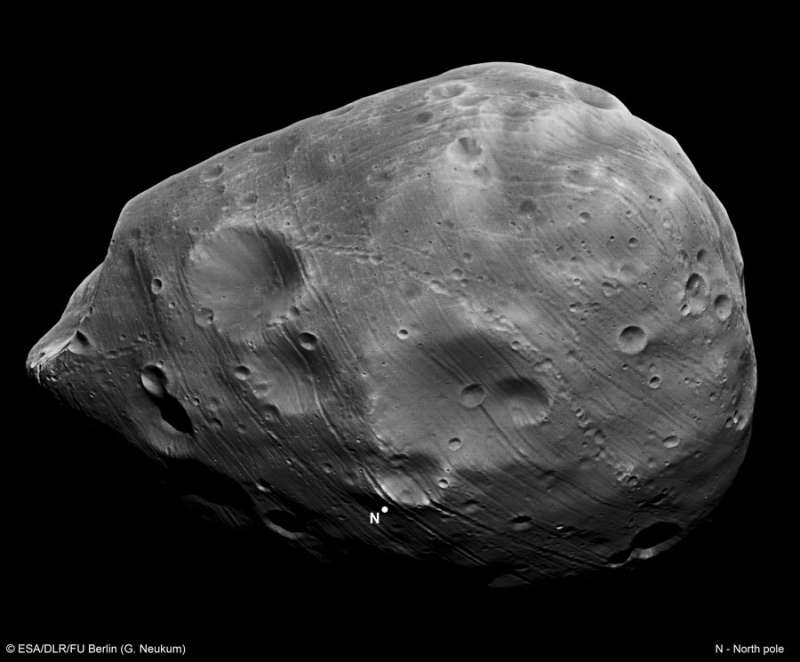Phobos from Mars Express

Explanation:
Why is this small object orbiting Mars?
The origin of
Phobos, the larger of
the two moons orbiting Mars, remains unknown.
Phobos and
Deimos appear very similar to
C-type asteroids,
yet
gravitationally capturing
such asteroids, circularizing their orbits, and dragging them into Mars' equatorial
plane seems unlikely.
Pictured above
is Phobos as it appeared during last week's
flyby of
ESA's
Mars Express,
a robotic spacecraft that began
orbiting Mars in 2003.
Visible
in great detail is
Phobos' irregular shape,
strangely dark terrain, numerous unusual grooves, and a spectacular chain of craters
crossing the image center.
Phobos spans
only about 25 kilometers in length and does not having enough gravity to compress
it into a ball.
Phobos orbits so close to Mars that sometime in the next 20 million years,
tidal deceleration
will break up the
rubble moon into a ring whose pieces will slowly spiral down and
crash onto the red planet.
The Russian mission
Phobos-Grunt
is scheduled to launch and
land
on Phobos next year.
Authors & editors:
Robert Nemiroff
(MTU) &
Jerry Bonnell
(USRA)
NASA Web Site Statements, Warnings,
and Disclaimers
NASA Official: Jay Norris.
Specific
rights apply.
A service of:
LHEA at
NASA /
GSFC
& Michigan Tech. U.

